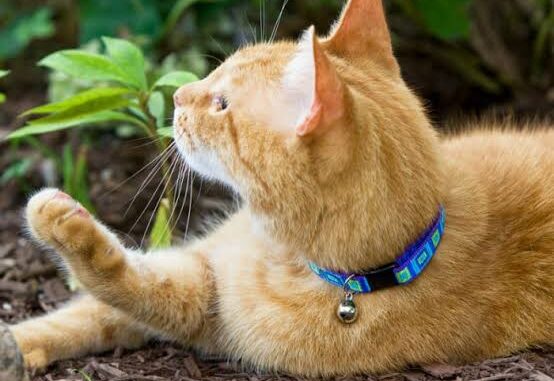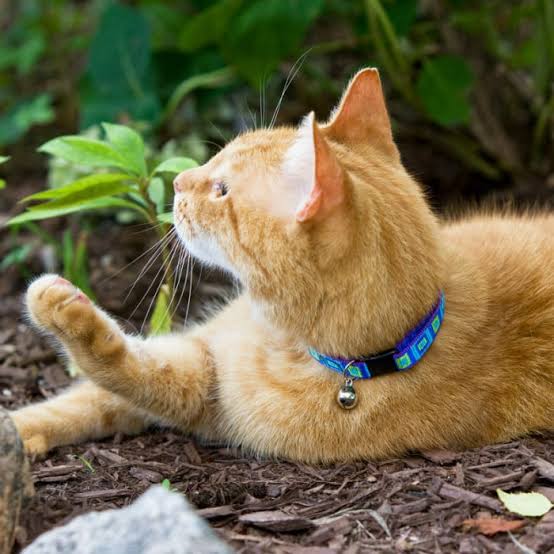
The Best Cat Collars for Safety and Style: A cat collar may seem like a small accessory, but it’s a powerful tool that combines function, fashion, and safety. From identification and breakaway safety to reflective materials and GPS tracking, the right cat collar can make a significant difference in your feline friend’s life.

In this comprehensive guide, we’ll explore what makes a great cat collar, the various types available, top recommendations for 2025, and key considerations to help you choose the perfect one. Whether your cat is an indoor explorer or an outdoor adventurer, this article has you covered.
Why Cat Collars Matter
Even if your cat stays indoors, a collar plays several vital roles:
- Identification: A collar with an ID tag helps people contact you if your cat escapes.
- Visibility: Reflective or lighted collars improve nighttime safety.
- Tracking: Some collars offer GPS or Bluetooth tracking.
- Safety Features: Breakaway mechanisms prevent choking or injury.
- Style: Let’s face it, your cat looks adorable with the right collar!
Types of Cat Collars
1. Breakaway Collars
Designed to “break” open if tugged hard—preventing injury if your cat gets snagged on a fence, branch, or furniture.
Best For: Outdoor cats and kittens.
2. Stretch Collars
Made from elastic material, these can be slipped over the head and expand to release tension. Not as reliable as breakaway collars but still safer than traditional buckles.
3. Standard Buckle Collars
Secure and adjustable, but may pose a strangulation risk if your cat climbs or squeezes into tight places. Not generally recommended without breakaway safety.
4. Flea Collars
Double as pest control, releasing chemicals or essential oils to repel fleas and ticks. Often less stylish, and not all are cat-safe—choose carefully.
5. GPS/Bluetooth Collars
Include built-in tracking tech to help locate a missing cat via a mobile app. Heavier than standard collars, so best suited for adult cats.
Features to Look For
Breakaway Safety Mechanism
This is non-negotiable for most cats, especially if they spend time outdoors or climb often.
Comfort and Fit
Look for soft, lightweight materials like nylon, leather, or neoprene. Measure your cat’s neck and ensure a snug (but not tight) fit—about two fingers’ width of space.
Reflective/Glow-in-the-Dark
Ideal for visibility at night. A must for outdoor cats.
Bell Attachment
A small bell can warn birds or rodents of your cat’s approach, though some felines may find it annoying. Detachable bells give flexibility.
ID Tag Loop or Customization
Some collars allow engraving directly onto the band. Others feature rings for hanging ID tags, address labels, or microchip notices.
Waterproof or Weatherproof
Helpful for active or adventurous cats who don’t mind water or get caught in rain.
Top 7 Cat Collars for Safety and Style in 2025
1. Beau & Nora Breakaway Safety Collar
Material: Soft nylon
Features: Breakaway buckle, reflective strip, bell, adjustable size
Why It’s Great: Combines safety and style with vibrant colors and patterns. Affordable and durable.
2. Rogz Catz ReflectoCat Collar
Material: Durable nylon webbing
Features: Reflective stitching, breakaway mechanism, sound-absorbing bell
Why It’s Great: Ideal for night visibility and outdoor use.
3. Blueberry Pet Classic Collar
Material: Polyester
Features: Breakaway, customizable ID plate
Why It’s Great: Stylish, minimal, and perfect for cats who don’t like dangling tags.
4. GoTags Personalized Cat Collar
Material: Nylon
Features: Embroidered name and phone number, breakaway clip
Why It’s Great: No ID tag needed—text is woven into the collar. Clean and practical.
5. Pawtitas Glow-in-the-Dark Collar
Material: Recycled fabric
Features: Breakaway safety, glow material, eco-friendly
Why It’s Great: Combines safety, sustainability, and visibility.
6. PetSafe KeepSafe Breakaway Collar
Material: Nylon
Features: Patented breakaway buckle, adjustable sizing
Why It’s Great: Developed by veterinarians to reduce strangulation risk. Excellent for climbers.
7. Tractive GPS Collar for Cats
Material: Lightweight silicone/GPS module
Features: Real-time GPS tracking, activity monitor, waterproof
Why It’s Great: Ideal for tech-savvy owners with adventurous cats.
READ ALSO: Dog-Friendly Hiking Trails: Adventure Awaits
How to Choose the Right Collar for Your Cat
Consider Your Cat’s Lifestyle
- Indoor cats: Lightweight and comfortable collars with ID tags.
- Outdoor cats: Reflective or glow-in-the-dark breakaway collars with bells.
- Escape artists: Consider GPS or tracking collars.
Assess Fit and Size
Use a flexible measuring tape and select a collar with adjustable sizing. The standard recommendation is to allow two fingers of space between the collar and your cat’s neck.
Observe Behavior
Some cats resist collars. Introduce the collar gradually and supervise the first few hours of wear. Reward your cat with treats and affection.
Tips for Introducing a Collar to Your Cat
- Start Early: Kittens are easier to train than adult cats.
- Short Sessions: Begin with a few minutes at a time.
- Reward & Distract: Offer treats or toys to associate the collar with positive experiences.
- Check Often: Monitor for signs of discomfort or skin irritation.
- Be Patient: Some cats may need days—or even weeks—to fully adjust.
Maintaining and Replacing Cat Collars
- Inspect Weekly: Check for fraying, loose buckles, or worn tags.
- Wash as Needed: Use gentle soap and warm water. Avoid harsh cleaners.
- Replace Regularly: At least once per year or after significant wear, stretching, or accidents.
- Update ID Info: Ensure tags or engraved details are current after address or phone number changes.
FAQs
Should indoor cats wear collars?
Yes. Even indoor cats can escape through an open window or door. A collar with ID info increases the chance of a safe return.
Are bells on collars harmful to cats?
Generally no, but some cats dislike them. If your cat is sensitive or easily stressed, choose a collar with a removable bell or use a quiet design.
What age can a kitten start wearing a collar?
Around 8–10 weeks, once they’re strong enough and used to handling. Always choose soft, lightweight options and monitor closely.
Are breakaway collars safe?
Yes. They are designed to unclip under pressure, preventing strangulation or injury. They’re widely recommended by veterinarians.
Can I attach a leash to a cat collar?
No. Leashes should be attached to a cat harness, not a collar, as cats can slip out or risk neck injuries.
What if my cat keeps losing its collar?
Ensure it’s properly sized—not too loose. You might try a stretch collar or GPS tracker to locate it when lost. Some cats just dislike collars and need gradual training.
Leave a Reply
You must be logged in to post a comment.